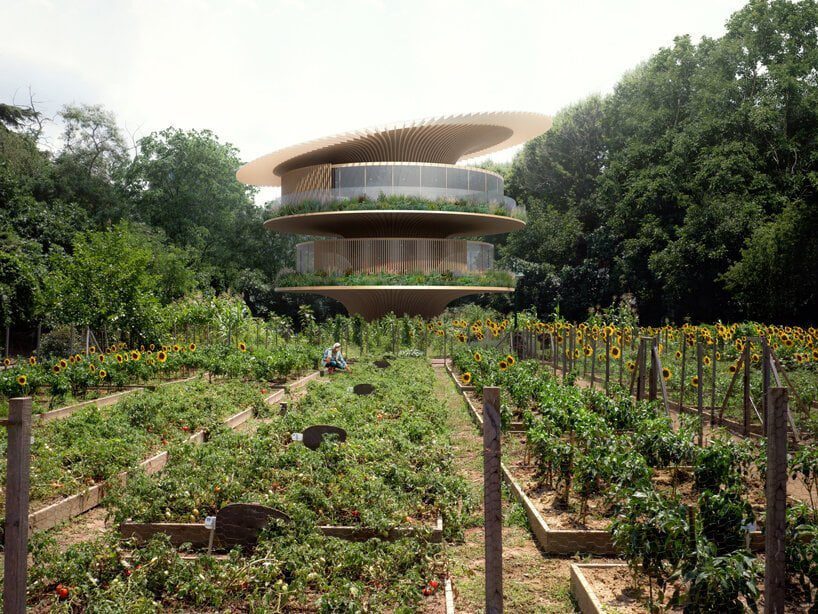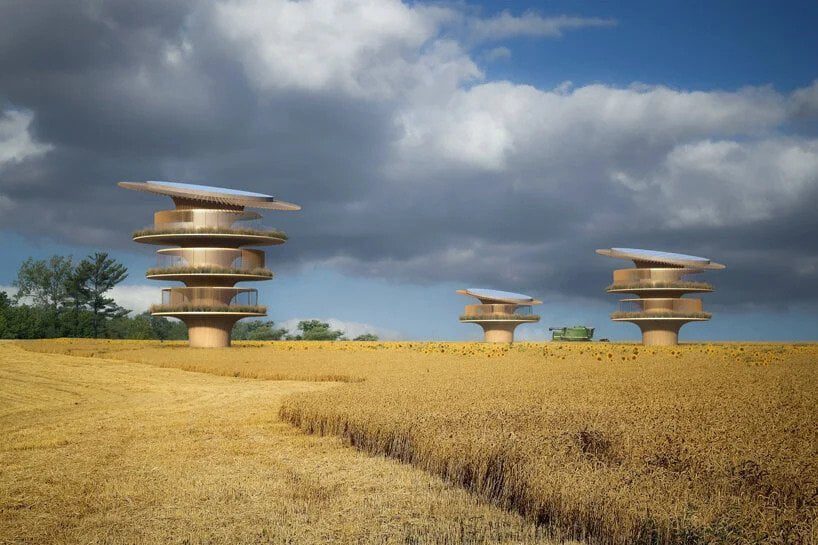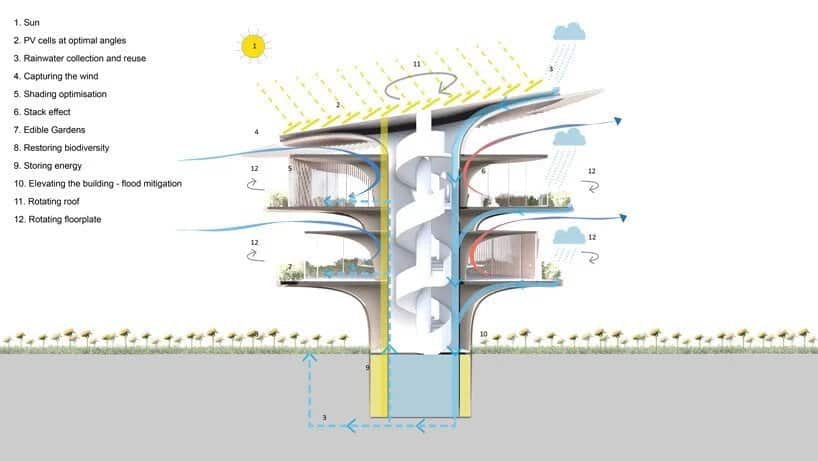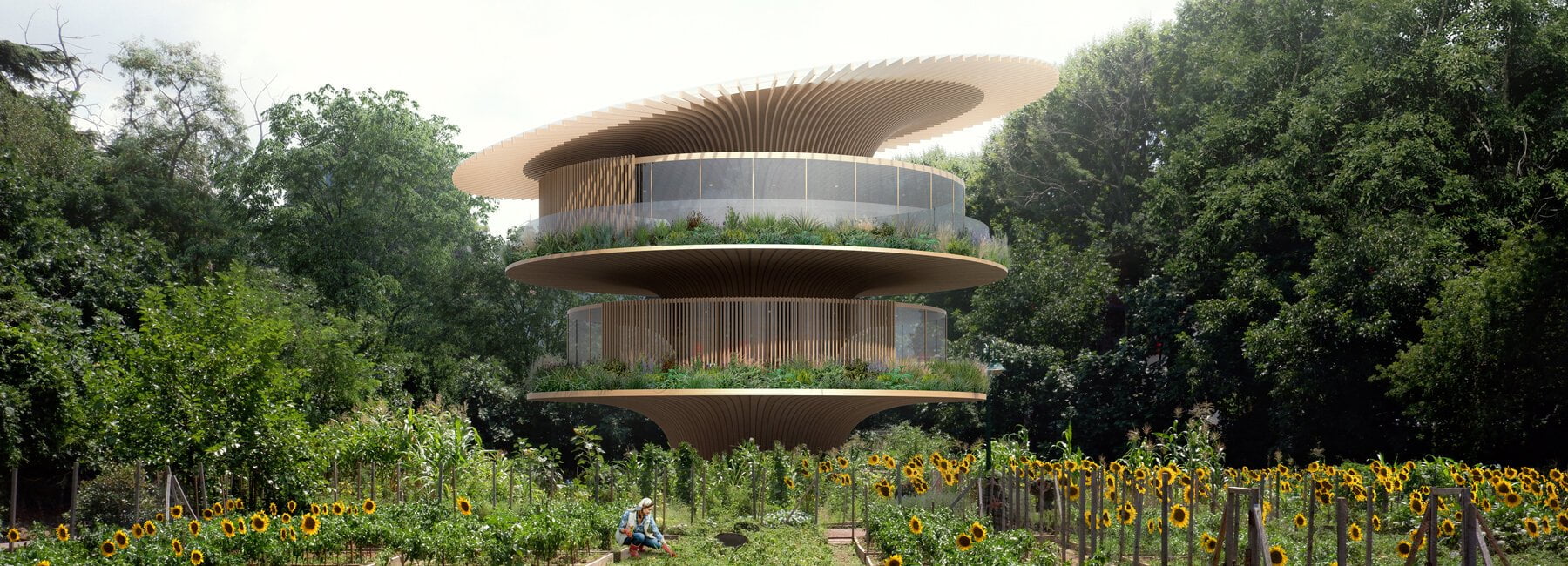“Form follows nature,” he says Koichi Takada regarding his vision of a single-family home with a positive environmental impact in Umbria.
Sunflower House, the "sunflower house" with a positive environmental impact, has a design (guess what?) clearly inspired by the characteristic yellow flower and the way in which it turns towards the sunlight.

A new Bauhaus
The EU needs a new Bauhaus, a movement that remodels all the architecture as the original did 100 years ago.
The objective is known to everyone: zero environmental impact by 2050. It is the subject of a recent speech also by Ursula von der Leyen, who asked to fight the climate by creating a new aesthetic, a new sensitivity.
To imagine this future-proof, zero-emissions aesthetic, Bloomberg Green asked Koichi Takada architects to choose a location in Europe and design a “dream home” for a greener European future.

There is no more beautiful place than Italy for a house with a positive environmental impact
Sunflower House was designed for the Italian region of Umbria, renowned for its rolling farmland and yellow fields of sunflowers. A wonderful place, in which however heat waves are becoming more frequent and extreme.
Takada's housing solution is characterized by a roof of solar panels able to rotate, thanks to a system of sensors, to always obtain maximum solar exposure.
The circular structure of the sunflower house rotates around a central “stem” to follow the sun, allowing the moving “solar flowers” to produce up to 40% more energy than static panels.
A positive environmental impact that generates a surplus. Unused energy can be fed into the grid or stored in a battery.
Rainwater is collected and used for irrigation and sanitation. The perimeter around the roof shades the windows below and aids ventilation, while a rotating secondary mechanism above the glass walls protects the building from solar radiation.

A house full of energy
Each floor of the green house houses a two or three bedroom apartment, and each building can be up to three stories high.
The scalability of this solution opens up the possibility of creating an entire neighborhood with a positive environmental impact. A field of sunflower houses that "move" to obtain more energy and not interfere with each other.
“Designers and architects often draw inspiration from nature in an aesthetic sense, but we need to go much deeper,” he says Takada. “It's not just about making a building natural, but about creating environmental change. Positive change in the homes we live in, the neighborhoods we work in and play in, and ultimately the planet we are privileged to inhabit.”
Climate change must be a catalyst for positive change, starting with our homes. We need a school of thought, a "kinetic" architecture. More: “living”.


